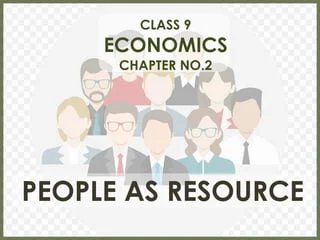Food Security in India - Class 9
Food Security in India refers to the availability, accessibility, affordability, and nutritional adequacy of food for all individuals in the country. It is a complex issue influenced by various factors, including production, distribution, and consumption patterns. Key aspects of food security in India include: Food production: The quantity and quality of food produced within the country. Food distribution: The availability of food in different regions and among different social groups. Food access: The ability of individuals to obtain food through purchase or other means. Food utilization: The nutritional quality of food consumed and its ability to meet people's dietary needs. Food security challenges: Issues such as food shortages, malnutrition, and food insecurity among vulnerable populations. Ensuring food security is a major challenge for India, given its large population and diverse geographical conditions. Addressing food security requires a multi-faceted approach that involves increasing production, improving distribution, and promoting food access and utilization. ভারতে খাদ্য নিরাপত্তা বলতে বোঝায় দেশের সকল ব্যক্তির জন্য খাদ্যের প্রাপ্যতা, সহজলভ্যতা, সাশ্রয়যোগ্যতা এবং পুষ্টির পর্যাপ্ততা। এটি উৎপাদন, বন্টন এবং ব্যবহারের ধরণ সহ বিভিন্ন কারণ দ্বারা প্রভাবিত একটি জটিল সমস্যা। ভারতে খাদ্য নিরাপত্তার প্রধান দিকগুলি হলঃ খাদ্য উৎপাদনঃ দেশের অভ্যন্তরে উৎপাদিত খাদ্যের পরিমাণ ও গুণমান। খাদ্য বিতরণঃ বিভিন্ন অঞ্চলে এবং বিভিন্ন সামাজিক গোষ্ঠীর মধ্যে খাদ্যের প্রাপ্যতা। খাদ্য প্রাপ্তিঃ ক্রয় বা অন্যান্য উপায়ে খাদ্য পাওয়ার ক্ষমতা। খাদ্যের ব্যবহারঃ খাওয়া খাবারের পুষ্টির গুণমান এবং মানুষের খাদ্যের চাহিদা মেটানোর ক্ষমতা। খাদ্য নিরাপত্তার চ্যালেঞ্জঃ খাদ্যের ঘাটতি, অপুষ্টি এবং দুর্বল জনগোষ্ঠীর মধ্যে খাদ্য নিরাপত্তাহীনতার মতো সমস্যা। বিপুল জনসংখ্যা এবং বৈচিত্র্যময় ভৌগলিক অবস্থার কারণে ভারতের জন্য খাদ্য নিরাপত্তা নিশ্চিত করা একটি বড় চ্যালেঞ্জ। খাদ্য নিরাপত্তা মোকাবিলার জন্য একটি বহুমুখী পদ্ধতির প্রয়োজন যার মধ্যে রয়েছে উৎপাদন বৃদ্ধি, বিতরণের উন্নতি এবং খাদ্যের প্রাপ্যতা ও ব্যবহারের প্রচার।
English
Last updated
Wed, 27-Nov-2024



















